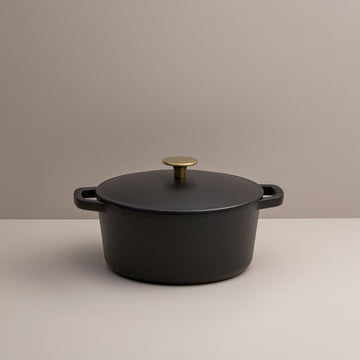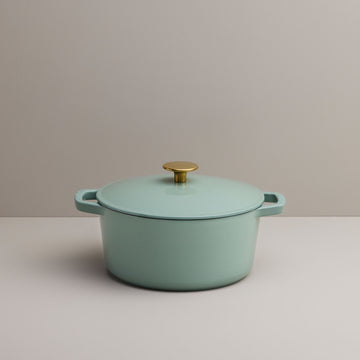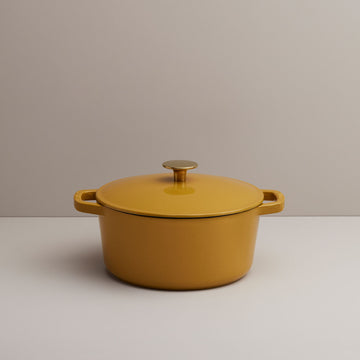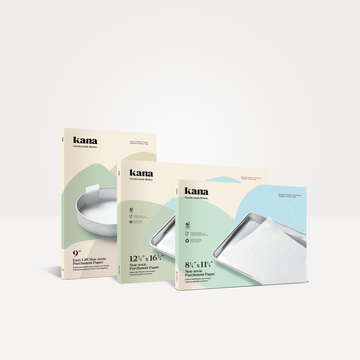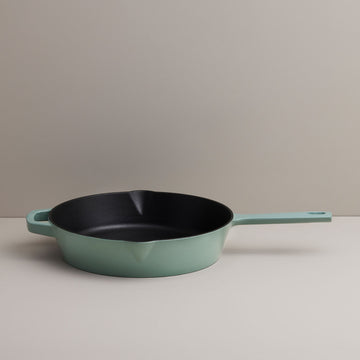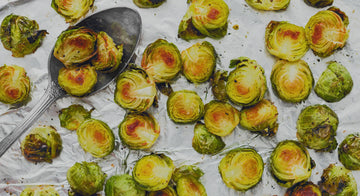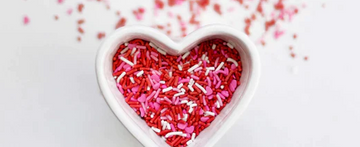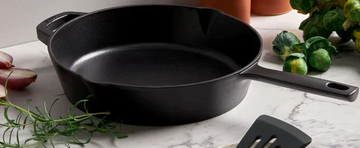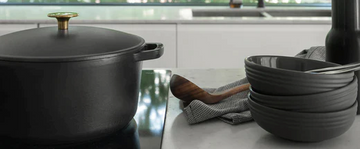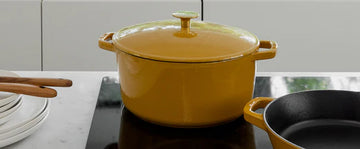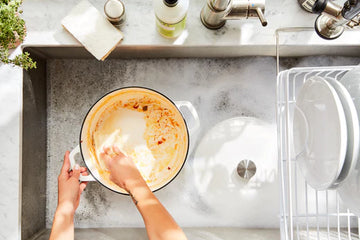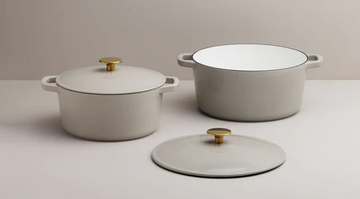We’re all striving to make thoughtful choices about our food – from what we eat and how we cook, to how we recycle and reduce our carbon footprint. After all, there’s nothing more satisfying than cooking a delicious, wholesome meal for the entire family made with fresh, ethical produce bought from the farmers market.
But a different source of toxic chemicals usually lurks right under our noses: in our cookware. Depending on the type of stock pot or sauté pan you have, toxic materials can end up in the food you eat and in your environment.
What’s more, in a market oversaturated by options, trying to choose from a vast range of cookware, from aluminium and stainless steel to cast iron and ceramic, can often feel overwhelming.
To help you navigate, we've compiled this guide to what you should consider when trying to buy the best non-toxic cookware.
How to shop for non-toxic cookware and bakeware

Good quality, non-reactive cookware is key to making delicious food and having peace of mind in your kitchen.
Chemicals 101: How cookware can be bad for you
Different cooking materials have found their way into our kitchens for all sorts of reasons. The innovation of non-stick Teflon-coating was a game changer for many home and professional cooks, while aluminum pots and pans were practical and cost-effective. That said, there are some reasons why these two cookware materials should probably stay off of your cookware shopping list.

Teflon
Teflon is the proprietary name for polytetrafluoroethylene (PTFE), a compound developed by DuPont in 1938, which delivered a nonstick performance, previoiusly unheard-of. DuPont continued with their chemical innovations in the early 1950s and began using another chemical, perfluorooctanoic (PFOA) acid, or C8, to help improve the appearance and performance of their existing Teflon products.
PFOA eventually became used in all sorts of products that benefited from nonstick and waterproof properties, such as fast food wrappers, waterproof clothing and electric cabling. The problem with PFOA is that it took the form of a fine powder which could be easily inhaled and escape into the surrounding environment. It was only after this had happened that the health implications began to be observed. PFOA can accumulate in blood, water and soil and contribute to a wide range of health issues including cancers, birth defects and immunological diseases in humans and animals.
What's worse - it was revealed that DuPont was aware of the dangers of PFOA, and continued to expose their employees and customers to it for over twenty years. Following a class action suit in 2004, the Environmental Protection Agency (EPA) eventually fined Du Pont and Teflon $16.5 million for covering up company studies about the danger of PFOA.
The manufacture of PFOA is now illegal in the United States, but it is still legal to import products internationally that have been made using PFOA. So while USA-made nonstick products do not contain PFOA, non-stick cookware manufactured outside the USA perhaps might.
PFOA eventually became used in all sorts of products that benefited from nonstick and waterproof properties, such as fast food wrappers, waterproof clothing and electric cabling. The problem with PFOA is that it took the form of a fine powder which could be easily inhaled and escape into the surrounding environment. It was only after this had happened that the health implications began to be observed. PFOA can accumulate in blood, water and soil and contribute to a wide range of health issues including cancers, birth defects and immunological diseases in humans and animals.
What's worse - it was revealed that DuPont was aware of the dangers of PFOA, and continued to expose their employees and customers to it for over twenty years. Following a class action suit in 2004, the Environmental Protection Agency (EPA) eventually fined Du Pont and Teflon $16.5 million for covering up company studies about the danger of PFOA.
The manufacture of PFOA is now illegal in the United States, but it is still legal to import products internationally that have been made using PFOA. So while USA-made nonstick products do not contain PFOA, non-stick cookware manufactured outside the USA perhaps might.

Aluminum
Lightweight and relatively inexpensive, aluminum is a popular choice for cookware. In fact, in 2015, it made up for almost 60% of all cookware sold in the United States, according to the Cookware Manufacturers Association.
While some studies have explored serious health risks linked to aluminum, no link has yet been proven. One of the most alarming connections suggested was between consumption of aluminum and development of Alzheimer's Disease. However this theory, dubbed 'the Aluminum Hypothesis' has been largely disregarded by Alzheimer's researchers with subsequent research has failing to bear it out.
One could say the real problem with aluminum is a matter of taste. Aluminum is more reactive than most metals you'd find in your kitchen. As such, it’s best to avoid cooking leafy vegetables and acidic foods like tomatoes, vinegar, and citrus in aluminum because they are highly reactive and absorb the material quickly. In some tests, cooking these foods in aluminum pots changed their flavor and appearance, with an unpleasant metallic taste detected in dishes like tomato sauce and lemon curd. Aluminum also dissolves most easily from worn or pitted pots and pans. For this reason, it’s best to avoid cooking and storing food in aluminum for long periods of time.
While some studies have explored serious health risks linked to aluminum, no link has yet been proven. One of the most alarming connections suggested was between consumption of aluminum and development of Alzheimer's Disease. However this theory, dubbed 'the Aluminum Hypothesis' has been largely disregarded by Alzheimer's researchers with subsequent research has failing to bear it out.
One could say the real problem with aluminum is a matter of taste. Aluminum is more reactive than most metals you'd find in your kitchen. As such, it’s best to avoid cooking leafy vegetables and acidic foods like tomatoes, vinegar, and citrus in aluminum because they are highly reactive and absorb the material quickly. In some tests, cooking these foods in aluminum pots changed their flavor and appearance, with an unpleasant metallic taste detected in dishes like tomato sauce and lemon curd. Aluminum also dissolves most easily from worn or pitted pots and pans. For this reason, it’s best to avoid cooking and storing food in aluminum for long periods of time.
The maybe pile: cookware worth considering
Copper, glass and ceramic have all got their strong points, however whether due to cost, durability or versatility, they may fall short of expectations:

Copper
Copper looks nice and conducts heat well, but it is heavy and expensive and not very durable. The same issues with acidity that exist with aluminum are present with copper. While most experts agree that small amounts of copper are good for your health, and chefs swear by copper for whipping egg whites, too much copper in the diet has been linked to neurodegenerative disease.

Glass
The good news with glass cookware is that, unlike aluminum, copper or iron, it is non-reactive and won’t release any chemicals into your food. It is also inexpensive, non-stick, safe to place in the microwave and dishwasher, and can usually resist wear and corrosion. The bad news is that it can often be heavy and fragile, and usually shouldn’t be used on gas stoves to avoid cracking and shattering the material.

Ceramic
If your cookware is 100% ceramic, you won’t have to worry about chemicals leaching into your food. Ceramic is non-stick, PTFE- and PFOA-free. Because ceramic is fired in a kiln, it makes the material durable and less prone to wear-and-tear. This also means that ceramic, which is made of clay and water, will usually be heavy. Like glass, however, ceramic cookware doesn't handle the stovetop terribly well and is more or less limited to oven and microwave cooking.
Top choices for non-toxic cookware
We hope you're prepared for a long-term relationship, because when you invest in enamel cookware or a lovely set of stainless steel pots and pans, you're in it for the long haul. These are our favourite options for non-toxic cookware:

Enamelware
Enamelware has a base of iron, steel or aluminum that’s coated with porcelain enamel, made from powdered glass. As a result, enamel pots and pans are highly resilient and can last a lifetime. They are also resistant to acidic foods and can be used at high temperatures. And the cherry on top? They’re simple to clean.
A great substitute for conventional cast iron cookware is an enameled version. Kana offers cast iron skillets and dutch ovens that are stick resistant, non-reactive to heat, and durable, offering a rust-free alternative that’s simple to use.
A great substitute for conventional cast iron cookware is an enameled version. Kana offers cast iron skillets and dutch ovens that are stick resistant, non-reactive to heat, and durable, offering a rust-free alternative that’s simple to use.

Stainless Steel
Stainless steel will go the distance. Often a popular choice for pressure cookers and big pots, they are great for cooking soup, vegetables, lentils and grains. Stainless steel is resistant to rust, and can handle a wide range of temperatures making it hugely versatile in the modern kitchen.
Stainless steel cookware is generally not coated in a non-stick material. However, a few tried-and-tested cooking techniques will help your food move more freely including:
Stainless steel cookware is generally not coated in a non-stick material. However, a few tried-and-tested cooking techniques will help your food move more freely including:
- Pre-heating your pan before adding oil
- Only adding food once oil has fully heated
- Allowing food to come to room temperature before cooking
- Not overcrowding your pan
Other tips, tricks and things to consider:
How do you clean your cookware?
Always follow the care instructions, especially in regard to dishwashers. In general, avoid using abrasive sponges or steel wool as these can damage the surface of your cookware. Stubborn food can be coaxed free with a little elbow grease after a short soak in warm, soapy detergent.
Do not use soap with raw cast iron as it can damage the seasoned surface. Instead, gently dislodge any food with coarse salt and warm water. Rinse and dry with a paper towel.
Do not use soap with raw cast iron as it can damage the seasoned surface. Instead, gently dislodge any food with coarse salt and warm water. Rinse and dry with a paper towel.
Need containers?
Consider durability and avoid aluminum. Go for glass (it lasts forever) or bamboo (a great, non-toxic storage alternative).
Need cutting boards?
Consider, again, the material. Avoid plastic by investing in wood, but seek out PEFC-certified products.
Need utensils?
Durable, and recyclable, stainless steel is a great alternative to plastic. Many utensils are also available in wood or bamboo versions.
Parchment paper is your friend:
Lining your bakeware with parchment paper before baking can create a friendly barrier between your food and toxic surfaces, especially if you can’t afford to replace your cookware all at once.
Having sustainable and non-toxic cookware goes a long way in making cooking friendly, safe and stress-free. While cookware brands can have an overwhelming amount of information on their labels, you can always call the manufacturer to ask questions and go over your needs, too. Just try to have some fun along the way.
Having sustainable and non-toxic cookware goes a long way in making cooking friendly, safe and stress-free. While cookware brands can have an overwhelming amount of information on their labels, you can always call the manufacturer to ask questions and go over your needs, too. Just try to have some fun along the way.
Make something delicious
SHARE
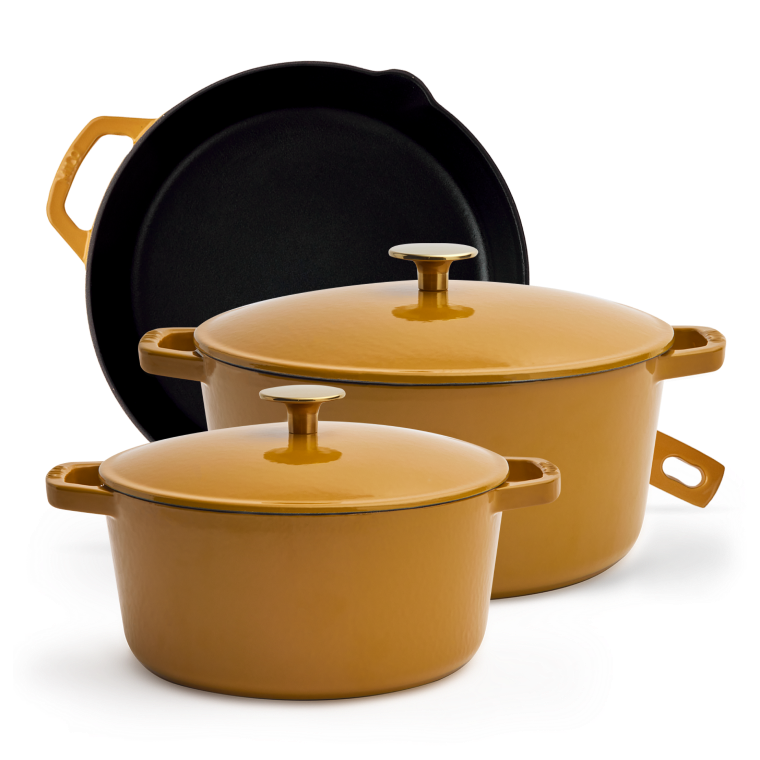
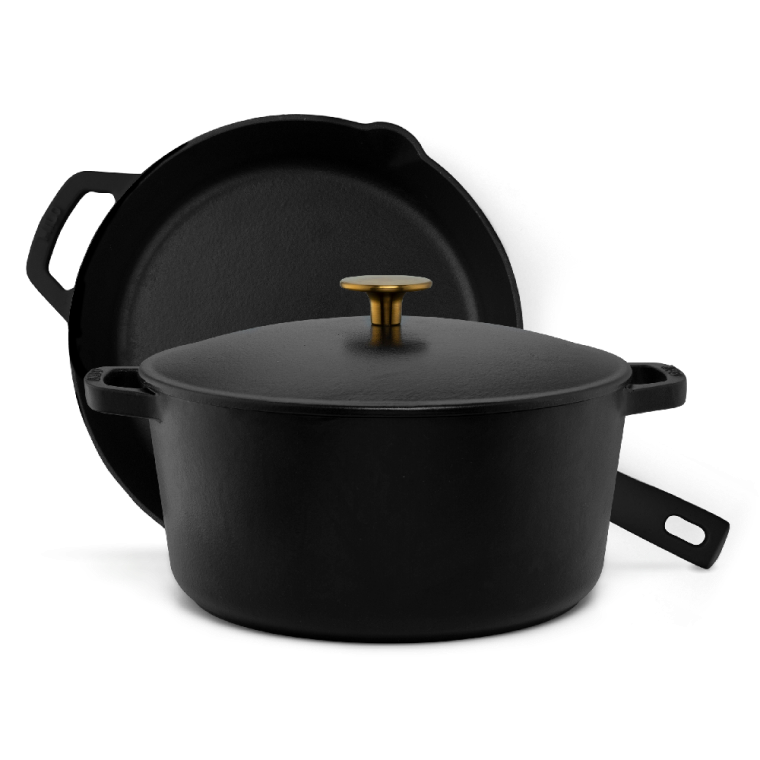

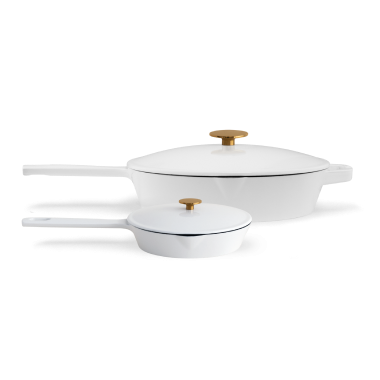


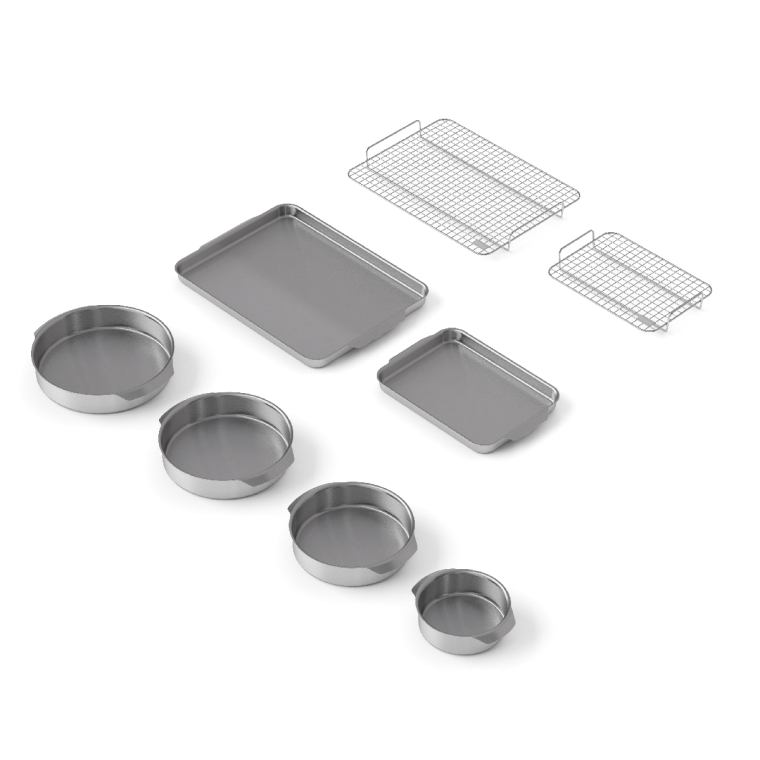
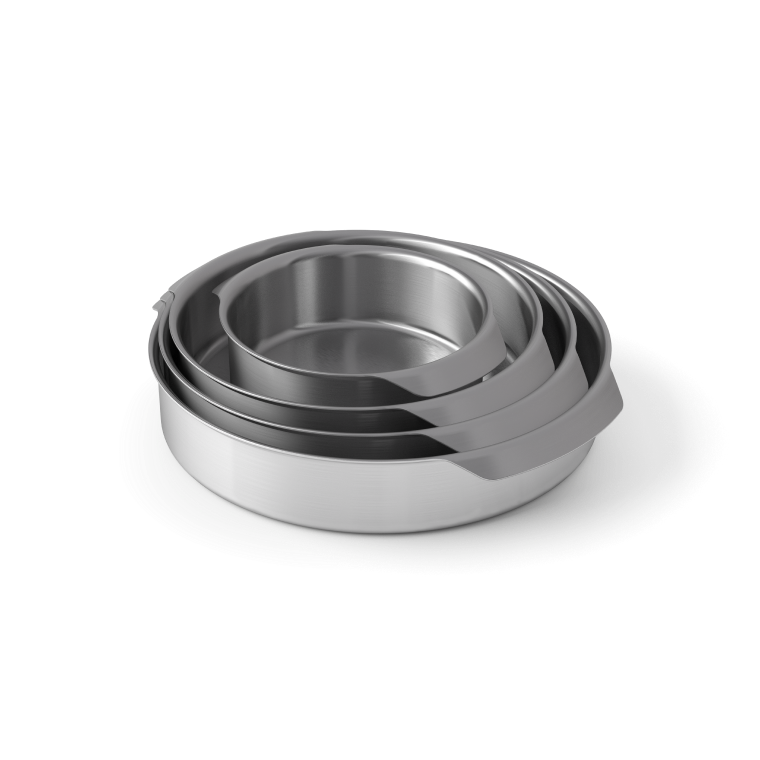










 Parchment Paper
Parchment Paper
